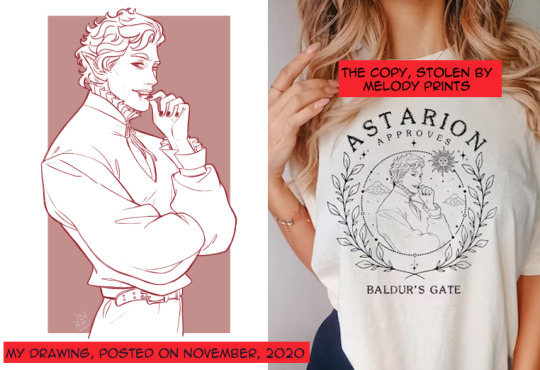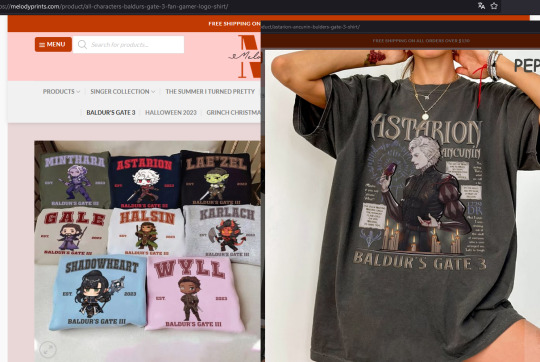#attorney website designer
Text

Improve your law website with Website Wizards your attorney website designer.
Looking for an online makeover for your law firm? Trust Website Wizards, your expert attorney website designer, to create a website that stands out and attracts more clients.
0 notes
Text
[PREV]
April 20, 2026: 10:30 AM
Instead of paying attention to the new witness, or in fact doing anything related to the trial, you once more pull out your phone and stare at the screen. There was something strange that you saw while you were updating your LinkedIn, and you kind of want to follow up on that.
You also want to follow up on how exactly your boss and Mr Wright know each other, but you're a little worried that pursuing that line of questioning might actually lose you your job.
Ultimately, you go for the immediately safer option and click on the gaudy ad in the top-right corner of your LinkedIn profile page. Is it just you, or does one of the people on the--you think it's an album cover--look uncannily like Mr Gavin?
Distantly, you hear the noises of the coutroom--somebody muttering in an exaggerated Russian accent; the banging of a gavel; assorted whispering and gasping. You're not paying attention to any of that, though--you're staring at the eyesore of a website that's occupying your phone screen.

The name of this band can't be a coincidence, can it? "Gavin" isn't a very common surname at all, and while the man who resembles your boss has much shorter hair and an outfit he wouldn't be caught dead wearing, there's no way they're not at least related.
But if Mr Gavin has connections to what seems to be a pretty established band, why would he never mention them? Who even are these people? Is their music any good? Who designed this website? You have to admit that your curiosity has left you with more questions than answers.
The urgent bang-bang-bang of the gavel snaps you out of your thoughts--what's happening in the courtroom? Hopefully nobody's noticed that you haven't been paying attention. You slip your phone back into your pocket and--
#adventures by committee#aa4#ace attorney#my writing#okay this website design is SO bad that i'm gonna add#eyestrain#flashing#gif#bright colors#apollo justice texts during trials#there's only so many ways to emulate the gavinners g in fonts so sorry if the logo looks similar to anyone else's design!#shoutout to anyone who noticed that linkedin 'also looked at' klavier's pfp had cat ears last post btw#why? idk i do what i want#ANYWAY thanks as ever for the participation!!#love seeing the Intense Battles between options
77 notes
·
View notes
Text

Are you seeking standout website design for your law firm?
Look no further! CaseFox offers SEO-optimized, accessible, and custom law firm website design and development services tailored to your needs. Enhance your online presence and attract more clients today.
To receive a Flat $200 Discount — visit our website and fill out the form: https://www.casefox.com/law-firm-website-design/
or
email us at: [email protected].
#attorneys#lawyers#law firms#solicitors#legal professionals#website#web design#web development#wordpress development#law firm website#law firm website design#law firm website development#legal website#legal website design#legal website development#lawyers website#attorney website#attorney website design#lawyer website design#attorney website development#lawyer website development
3 notes
·
View notes
Text
#local seo for attorneys#seo for divorce attorneys#Custom Website Design for Attorneys#attorney seo las vegas
0 notes
Text
Top & Trendy Law Firm WordPress Theme 2024
⚖️ Elevate Your Legal Practice with Igual - The Pinnacle of Law Firm WordPress Themes! ⚖️✨
Unleash the power of a compelling online presence with Igual - meticulously crafted to redefine excellence in the legal realm. 🏛️🚀
🌟 Key Features:
✅ Sleek & Professional Design
✅ Attorney Showcase and Profiles
✅ Case Studies and Legal Insights
✅ Appointment Booking System
✅ Seamless Contact Forms
✅ Mobile Responsive & SEO-Optimized
🏆 Why Choose Igual?
Experience the perfect synergy of aesthetics and functionality. Igual empowers your law firm to stand out, showcase expertise, and attract clients effortlessly.
Position your law firm as a beacon of trust and competence. Invest in Igual, where justice meets innovation! 🌐⚖️
Read More 👉 https://1.envato.market/a1BQLQ
We provide high-quality SEO-friendly website themes and templates with 100% responsive design.
Explore it ► https://zozothemes.com/

#web design#wordpress#web development#wordpress themes#web design services#wordpress theme#website#web designing#wordpress website#website design#law#law firm#lawyer#attorney#law firm wordpress theme#lawyer wordpress theme#zozothemes
0 notes
Text
Please share !!
Dear followers and mutuals,
I need your help ! ⚠️⚠️⚠️
(sorry for the long post)
The same Astarion artwork continues to be stolen time and time again by unscrupulous shops (I've filed over 20 complaints, just on Etsy alone). One particular independent shop refuses to remove the items using my artwork, ignores my messages, and deletes all my comments warning buyers.
Here's the specific artwork, my original fanart, and the low-quality and insolent modification to turn it into a shoddy sweatshirt and t-shirt design. Which is promoted on TikTok !


This has to stop.
Sharing your work on the internet, or even just sharing your passion, has become a nightmare for artists and creators. We already have enough to deal with in the face of AI threats and platforms like Aliexpress; now we have to manage a surge in theft as well.
This shop is also appropriating other artworks from the BG3 fandom.
Here are the screenshots :
I'm seeking your help in identifying the authors of these artworks so that I can notify them.





I'm also currently in contact with a specialized attorney because I've had enough.
The cup is full, and I want to be able to showcase my drawings without enriching thieves. It's particularly painful during this period of economic crisis, where, like many others, I'm struggling to make ends meet, to feed my two young kids.
Here are all the contact details for this fraudulent shop :
⚠️ Please share this post and report Melody prints social media's accounts ⚠️ Everyone needs to know they are a THIEF ⚠️
melodyprints.com
The website says the shop is located in 217 S Parramore Ave, Orlando, FL 32805, United States
TikTok account of melodyprints is spookymelodyprints
Instagram account of melodyprints is _melodyprints
Also, Ghosttraveler on TikTok has made a callout video to help, here is the link, if you can share it as well : https://www.tiktok.com/@ghosttraveler/video/7291769599530454314
Thank you so much for reading this, and for your help.
2K notes
·
View notes
Text
Omnizant Takes Home Four WebAwards for 2022
Omnizant Takes Home Four WebAwards for 2022
Omnizant
Port Washington, NY (Law Firm Newswire) September 30, 2022 – We are excited to announce that Omnizant has been awarded four WebAwards by the Web Marketing Association (WMA).
The WMA has recognized Omnizant for excellence in design on the following websites.
Woods Lonergan – Legal Standard of Excellence
New York Traffic Ticket Lawyers – Outstanding Website
Saeedian Law Group – Outstanding…

View On WordPress
0 notes
Text
Elevate Your Legal Practice with Expert Attorney Website Design
In today’s digital age, having a professional online presence is imperative for any business, and law firms are no exception. Your website serves as the virtual face of your practice, often forming the first impression potential clients have of your firm. With the competitive landscape of the legal industry, it's crucial to stand out from the crowd with a visually appealing and user-friendly website. This is where Website Wizards, a premier attorney website designer, comes into play.
Crafting Legal Excellence Online
At Website Wizards, we specialize in crafting bespoke websites tailored specifically for attorneys and law firms. Our team understands the unique needs and challenges of legal professionals and works closely with each client to create a custom solution that reflects their brand identity and expertise.
With our attorney website design services, you can expect:
1. Professional Aesthetics: Your website will exude professionalism and credibility, helping to instill trust in potential clients from the moment they land on your page.
2. User-Friendly Interface: We prioritize intuitive navigation and user experience to ensure that visitors can easily find the information they need, whether it's your practice areas, attorney profiles, or contact details.
3. Mobile Responsiveness: In an era where more and more users access the internet through mobile devices, we ensure that your website looks and functions flawlessly across all screen sizes.
4. Search Engine Optimization (SEO): Our websites are optimized for search engines, helping your firm rank higher in search results and attract organic traffic.
5. Content Management: Easily update and manage your website content with our user-friendly content management system, allowing you to keep your site fresh and relevant.
Minnesota Web Design Company Tailored to Your Needs
For law firms based in Minnesota, Website Wizards offers specialized web design services catered to the local market. Our Minnesota web design company understands the unique preferences and expectations of clients in the region, allowing us to create websites that resonate with the local audience.
Whether you're a solo practitioner or a large law firm, our team has the expertise and resources to elevate your online presence and help you attract and retain clients.
Why Choose Website Wizards?
1. Expertise: With years of experience in web design and digital marketing, Website Wizards has a proven track record of delivering exceptional results for attorneys and law firms nationwide.
2. Customization: We don't believe in one-size-fits-all solutions. Every website we create is custom-tailored to meet the unique needs and goals of each client.
3. Client-Centric Approach: Your satisfaction is our top priority. We take the time to understand your objectives and preferences, ensuring that the end result exceeds your expectations.
4. Affordability: We offer competitive pricing without compromising on quality, making professional web design accessible to law firms of all sizes.
Take Your Legal Practice to New Heights
Don't settle for a mediocre online presence. Partner with Website Wizards and take your legal practice to new heights with a stunning and effective website. Contact us today to schedule a consultation and see how we can help you achieve your online goals.
Expanding Your Digital Footprint
In today's hyper-connected world, having a strong digital footprint is essential for attracting clients and growing your legal practice. By partnering with a reputable attorney website designer like Website Wizards, you can expand your reach and connect with potential clients across various online platforms.
With our expertise in attorney website design, we can help you create a professional and engaging online presence that sets you apart from the competition. From eye-catching visuals to informative content, we'll work with you to ensure that your website accurately reflects your brand and resonates with your target audience.
But our services don't stop at website design. As a full-service web design company, we offer a range of digital marketing solutions to help you maximize your online visibility and attract more clients. From search engine optimization (SEO) to social media marketing, we'll develop a customized strategy to drive traffic to your website and generate leads for your firm.
Navigating the Digital Landscape
In today's digital landscape, it's not enough to simply have a website – you need a website that stands out and effectively communicates your brand message. With the help of Website Wizards, you can create a compelling online presence that captures the attention of potential clients and converts them into loyal customers.
Our team of experienced designers and developers will work closely with you to understand your unique needs and goals, ensuring that your website reflects the essence of your brand and showcases your expertise in the legal field. Whether you're a solo practitioner or a large law firm, we have the skills and resources to create a website that drives results and helps you achieve your business objectives.
From the initial consultation to the final launch, we'll be with you every step of the way, providing guidance and support to ensure that your website exceeds your expectations. With our proven track record of success and commitment to client satisfaction, you can trust Website Wizards to deliver outstanding results that elevate your legal practice to new heights.
0 notes
Link
SAP Crystal Reports has many benefits and so many unique features that it is our top choice for a business intelligence platform.

#Crystal Reports#Android Application Development#application software development#Attorney and Law Firm Website Design services
0 notes
Note
sorry if you've talked about it already, but what is it that makes KOSA's idea of online safety wrong? I don't know much about the bill, what does it intend to do?
What do you think is a good way to protect kids from things like online predators or just seeing things that they shouldn't be seeing? (By which I mean sex and graphic violence, things which you'd need to be 16+ to see in a movie theater so I think it makes sense to not want pre-teens to see it)
From stopkosa.com:
Why is KOSA a bad bill?
KOSA uses two methods to “protect” kids, and both of them are awful.
First, KOSA would incentivize social media platforms to erase content that could be deemed “inappropriate” for minors. The problem is: there is no consensus on what is inappropriate for minors. All across the country we are seeing how lawmakers are attacking young people’s access to gender affirming healthcare, sex education, birth control, and abortion. Online communities and resources that queer and trans youth depend on as lifelines should not be subject to the whims of the most rightwing extremist powers and we shouldn’t give them another tool to harm marginalized communities.
Second, KOSA would ramp up the online surveillance of all internet users by expanding the use of age verification and parental monitoring tools. Not only are these tools needlessly invasive, they’re a massive safety risk for young people who could be trying to escape domestic violence and abuse.
I’ve heard there’s a new version of KOSA. What’s the deal?
The new version of KOSA makes some good changes: narrowing the ability of rightwing attorneys general to weaponize KOSA to target content they don’t like and limiting the problematic “duty of care. However, because the bill is still not content neutral, KOSA still invites the harms that civil rights advocates have warned about.
As LGBTQ and reproductive rights groups have said for months, the fundamental problem with KOSA is that its “duty of care” covers content specific aspects of content recommendation systems, and the new changes fail to address that. In fact, personalized recommendation systems are explicitly listed under the definition of a design feature covered by the duty of care in the new version. This means that a future Federal Trade Commission (FTC) could still use KOSA to pressure platforms into automated filtering of important, but controversial topics like LGBTQ issues and abortion, by claiming that algorithmically recommending such content “causes” mental health outcomes that are covered by the duty of care like anxiety and depression. Bans on inclusive books, abortion, and gender affirming healthcare have been passed on exactly that kind of rhetoric in many states recently. And we know that already existing content filtering systems impact content from marginalized creators exponentially more, resulting in discrimination and censorship.
It’s also important to remember that algorithmic recommendation includes, for example, showing a user a post from a friend that they follow, since most platforms do not show all users all posts, but curate them in some way. As long as KOSA’s duty of care isn’t content neutral, platforms will be likely to react the same way that they did to the broad liability imposed by SESTA/FOSTA: by engaging in aggressive filtering and suppression of important, and in some cases lifesaving, content.
Why it's bad:
The way it's written (even after being changed, which the website also goes over), it is still possible for this law to be used to restrict things like queer content, discussion of reproductive rights and resources, and sexual education.
It will restrict youth's ability to use the Internet independently, essentially cutting off life support to many vulnerable people who rely on the Internet to learn that they are queer, being abused, disabled, etc.
Better alternatives:
Stop relying on ageist ideas of purity and innocence. When we focus on protecting the "purity" of youth, we dehumanize them and it becomes more about soothing adult anxieties than actually improving the lives of children.
Making sure content (sexual, violent, etc.) is marked/tagged and made avoidable for anyone who doesn't want to engage with it.
Teach children why certain things may be upsetting and how best to avoid those things.
Teach children how to recognize grooming and abuse and empower them to stop it themselves.
Teach children how to recognize fear, discomfort, trauma, and how to cope with those experiences.
The Internet makes a great boogeyman. But the idea that it is uniquely corrupting the Pure Innocent Youth relies on the idea that all children are middle-class suburban White kids from otherwise happy homes. What about the children who see police brutality on their front lawns, against their family members? How are we protecting them from being traumatized? Or children who are seeing and experiencing physical and sexual violence in their own homes, by the parents who prevent them from realizing what's happening by restricting their Internet usage? How does strengthening parent's rights stop those kids from being groomed? Or the kids who grow up in evangelical Christian homes and are given graphic descriptions of the horrors of the Apocalypse and told if they ever question their parents, they'll be left behind?
Children live in the same world we do. There are children who are already intimately aware of violence and "adult" topics because of their lived experiences. Actually protecting children means being concerned about THEIR human rights, it means empowering them to save themselves, it means giving them the tools to understand their own feelings and traumas. KOSA is just another in a long line of attempts to "save the children!" by dehumanizing them and giving more power to the people most likely to abuse them. We need to stop trying to protect children's "innocence" and appreciate that children are already growing, changing people, learning to deal with discomfort and pain and the weight of the world the same as everyone else. What people often think keeps kids safe really just keeps them ignorant and quiet.
Another explanation as to why it's bad:
179 notes
·
View notes
Text
Living online means never quite understanding what’s happening to you at a given moment. Why these search results? Why this product recommendation? There is a feeling—often warranted, sometimes conspiracy-minded—that we are constantly manipulated by platforms and websites.
So-called dark patterns, deceptive bits of web design that can trick people into certain choices online, make it harder to unsubscribe from a scammy or unwanted newsletter; they nudge us into purchases. Algorithms optimized for engagement shape what we see on social media and can goad us into participation by showing us things that are likely to provoke strong emotional responses. But although we know that all of this is happening in aggregate, it’s hard to know specifically how large technology companies exert their influence over our lives.
This week, Wired published a story by the former FTC attorney Megan Gray that illustrates the dynamic in a nutshell. The op-ed argued that Google alters user searches to include more lucrative keywords. For example, Google is said to surreptitiously replace a query for “children’s clothing” with “NIKOLAI-brand kidswear” on the back end in order to direct users to lucrative shopping links on the results page. It’s an alarming allegation, and Ned Adriance, a spokesperson for Google, told me that it’s “flat-out false.” Gray, who is also a former vice president of the Google Search competitor DuckDuckGo, had seemingly misinterpreted a chart that was briefly presented during the company’s ongoing U.S. et al v. Google trial, in which the company is defending itself against charges that it violated federal antitrust law. (That chart, according to Adriance, represents a “phrase match” feature that the company uses for its ads product; “Google does not delete queries and replace them with ones that monetize better as the opinion piece suggests, and the organic results you see in Search are not affected by our ads systems,” he said.)
Gray told me, “I stand by my larger point—the Google Search team and Google ad team worked together to secretly boost commercial queries, which triggered more ads and thus revenue. Google isn’t contesting this, as far as I know.” In a statement, Chelsea Russo, another Google spokesperson, reiterated that the company’s products do not work this way and cited testimony from Google VP Jerry Dischler that “the organic team does not take data from the ads team in order to affect its ranking and affect its result.” Wired did not respond to a request for comment. Last night, the publication removed the story from its website, noting that it does not meet Wired’s editorial standards.
It’s hard to know what to make of these competing statements. Gray’s specific facts may be wrong, but the broader concerns about Google’s business—that it makes monetization decisions that could lead the product to feel less useful or enjoyable—form the heart of the government’s case against the company. None of this is easy to untangle in plain English—in fact, that’s the whole point of the trial. For most of us, evidence about Big Tech’s products tends to be anecdotal or fuzzy—more vibes-based than factual. Google may not be altering billions of queries in the manner that the Wired story suggests, but the company is constantly tweaking and ranking what we see, while injecting ads and proprietary widgets into our feed, thereby altering our experience. And so we end up saying that Google Search is less useful now or that shopping on Amazon has gotten worse. These tools are so embedded in our lives that we feel acutely that something is off, even if we can’t put our finger on the technical problem.
That’s changing. In the past month, thanks to a series of antitrust actions on behalf of the federal government, hard evidence of the ways that Silicon Valley’s biggest companies are wielding their influence is trickling out. Google’s trial is under way, and while the tech giant is trying to keep testimony locked down, the past four weeks have helped illustrate—via internal company documents and slide decks like the one cited by Wired—how Google has used its war chest to broker deals and dominate the search market. Perhaps the specifics of Gray’s essay were off, but we have learned, for instance, how company executives considered adjusting Google’s products to lead to more “monetizable queries.” And just last week, the Federal Trade Commission filed a lawsuit against Amazon alleging anticompetitive practices. (Amazon has called the suit “misguided.”)
Filings related to that suit have delivered a staggering revelation concerning a secretive Amazon algorithm code-named Project Nessie. The particulars of Nessie were heavily redacted in the public complaint, but this week The Wall Street Journal revealed details of the program. According to the unredacted complaint, a copy of which I have also viewed, Nessie—which is no longer in use—monitored industry prices of specific goods to determine whether competitors were algorithmically matching Amazon’s prices. In the event that competitors were, Nessie would exploit this by systematically raising prices on goods across Amazon, encouraging its competitors to follow suit. Amazon, via the algorithm, knew that it would be able to charge more on its own site, because it didn’t have to worry about being undercut elsewhere, thereby making the broader online shopping experience worse for everyone. An Amazon spokesperson told the Journal that the FTC is mischaracterizing the tool, and suggested that Nessie was a way to monitor competitor pricing and keep price-matching algorithms from dropping prices to unsustainable levels (the company did not respond to my request for comment).
In the FTC’s telling, Project Nessie demonstrates the sheer scope of Amazon’s power in online markets. The project arguably amounted to a form of unilateral price fixing, where Amazon essentially goaded its competitors into acting like cartel members without even knowing they’d done so—all while raising prices on consumers. It’s an astonishing form of influence, powered by behind-the-scenes technology.
The government will need to prove whether this type of algorithmic influence is illegal. But even putting legality aside, Project Nessie is a sterling example of the way that Big Tech has supercharged capitalistic tendencies and manipulated markets in unnatural and opaque ways. It demonstrates the muscle that a company can throw around when it has consolidated its position in a given sector. The complaint alleges that Amazon’s reach and logistics capabilities force third-party sellers to offer products on Amazon and for lower prices than other retailers. Once it captured a significant share of the retail market, Amazon was allegedly able to use algorithmic tools such as Nessie to drive prices up for specific products, boosting revenues and manipulating competitors.
Reading about Project Nessie, I was surprised to feel a sense of relief. In recent years, customer-satisfaction ratings have dipped among Amazon shoppers who have cited delivery disruptions, an explosion of third-party sellers, and poor-quality products as reasons for frustration. In my own life and among friends and relatives, there has been a growing feeling that shopping on the platform has become a slog, with fewer deals and far more junk to sift through. Again, these feelings tend to occupy vibe territory: Amazon’s bigness seems stifling or grating in ways that aren’t always easy to explain. But Nessie offers a partial explanation for this frustration, as do revelations about Google’s various product adjustments. We have the sense that we’re being manipulated because, well, we are. It’s a bit like feeling vaguely sick, going to the doctor, and receiving a blood-test result confirming that, yes, the malaise you experienced is actually an iron deficiency. It is the catharsis of, at long last, receiving a diagnosis.
This is the true power of the surge in anti-monopoly litigation. (According to experts in the field, September was “the most extraordinary month they have ever seen in antitrust.”) Whether or not any of these lawsuits results in corporate breakups or lasting change, they are, effectively, an MRI of our sprawling digital economy—a forensic look at what these larger-than-life technology companies are really doing, and how they are exerting their influence and causing damage. It is confirmation that what so many of us have felt—that the platforms dictating our online experiences are behaving unnaturally and manipulatively—is not merely a paranoid delusion, but the effect of an asymmetrical relationship between the giants of scale and us, the users.
In recent years, it’s been harder to love the internet, a miracle of connectivity that feels ever more bloated, stagnant, commercialized, and junkified. We are just now starting to understand the specifics of this transformation—the true influence of Silicon Valley’s vise grip on our lives. It turns out that the slow rot we might feel isn’t just in our heads, after all.
211 notes
·
View notes
Text
lmao no way the heritage foundation AND family research coujust admitted that the massively popular bipartisan-backed bill Kid's Online Safety Act [that a bunch of left-wing orgs have been doing heavy PR for] is all a ploy to censor trans kids online. a bunch of supposed left-wing orgs just threw the entire lgbt, esp trans community under the bus after spending hundreds of thousands of dollars bringing in people to capitol hill advocating for this bill.
the left is May 20 2023, the HERITAGE FOUNDATION coming out and saying that yes, KOSA is designed specifically so that Republican attorney generals can sue websites for content that "harms minors" (which is why over 100+ lgbt and human rights orgs opposed it last year).
the right is May 23, 2023, with left/liberal orgs doing the heavy PR for KOSA and claiming noooo it definetely helps queer youth lol just look at our fact sheet (that's been debunked by the ACLU and orgs that actually work in tech policy). this is apparently a rebuttal after the Heritage Foundation and Family Research Council came out in support of it. my question is, if they're explicitly saying, and the ACLU alongside hundreds of other groups are also saying this bill is bad, why the fuck are you still supporting it and sending lobbyists to push for it?


423 notes
·
View notes
Text
Grab a creative #Igual - Law Firm WordPress Theme Just for $69!
Igual “Law Firm WordPress Theme” is designed for law firms, legal practices, attorneys, and other related businesses. This theme is packed with features that are tailored to meet the specific needs of law firms and attorneys, making it an ideal choice for any legal business looking to create a professional and modern online presence.
Some unique features of the Law Firm WordPress Theme include:
Customizable Design
Pre-built pages
Lawyer Profiles
Appointment Bookin
SEO-Friendly
Responsive Design
Read More ► https://1.envato.market/a1BQLQ
We provide high-quality SEO-friendly website themes and templates with 100% responsive design.
Explore it ► https://zozothemes.com/

0 notes
Note
Bad Dragon is suing SinSaint over copyright infringement of their dildo designs. What I want to know is, can you copyright the shape of a dog's dick? Because if you can, you shouldn't be able to.
I did knot need to hear about this one.
one more pun

TSG is gonna be one of the more reputable sources for this one
MARCH 25--A manufacturer of “fantasy-themed sex toys” has accused an upstart Brooklyn, New York firm of knocking off its distinctive designs, according to a federal lawsuit alleging that the defendant has infringed on copyrights for dildos such as “Spritz the Seadragon” and “Tyson the Water Buffalo.”
In a March 20 complaint filed in U.S. District Court in Arizona, Bad Dragon Enterprises contended that its “sculptural” products have been illegally copied by SinSaint, which is headquartered in a Coney Island warehouse and advertises that all its “Ethically Manufactured” toys are “made in Brooklyn, USA.”
Bad Dragon, which noted that it has had “significant commercial success” in the adult toy field, alleged that SinSaint has been selling the duplicative dildos through its website and other trade channels, including the recent AVN Adult Entertainment Expo in Las Vegas (where the new firm’s exhibitor booth was next to that of the all-nude Palomino strip club).
The lawsuit identifies 13 separate dildos that Bad Dragon claims have been copied (and renamed) by SinSaint, which was incorporated in New York last year. The colorful silicone toys feature scales, tentacles, suction cups, and other design elements meant to mimic the genitalia of dragons, sea creatures, and other fantastical characters.
Some of the Bad Dragon products that SinSaint is accused of swiping are “Kelvin the Ice Dragon,” “Stan the T. Rex,” and “Vergil the Drippy Dragon.” SinSaint has not been accused of pirating other Bad Dragon offerings like “Jason the Demogorgon” or “Cuttlefish of Cthulhu.”
According to the lawsuit, SinSaint’s counsel last month stated that the company had begun removing “some of the allegedly infringing listings for product redesign.” This response, Bad Dragon contended, was “unacceptable,” adding that it “continues to be harmed by Defendant’s ongoing, unlawful conduct.”
The Bad Dragon complaint seeks an order enjoining SinSaint from continuing any further alleged
copyright infringement and seeks “disgorgement of all of Defendant’s profits” related to the artificial penises. The company may also seek statutory damages of up to $150,000 for each of the dildos in question.
For more than a decade, Bad Dragon has sought trademark and copyright protection for various product lines. While often successful, the firm’s application to trademark its “Cum Tube” was abandoned after a government attorney rejected the ejaculating dildo because the “applied-for mark consists of or includes immoral or scandalous matter.” The application included a very NSFW image, which can be found on the U. S. Patent and Trademark Office website.
According to an August 2023 trademark application, SinSaint’s owner is Oleg Semenenko, 50, a resident of Brooklyn’s gated Seagate community. Semenenko lives less than a mile from SinSaint’s warehouse, which shares an address with GlobMarble, an industrial molds business for which Semenenko is listed as “manager” in a separate trademark application filed this month.
In a brief interview today, Semenenko was asked how a dildo firm grew out of his original business. “We work with rubber,” he replied. Semenenko dismissed Bad Dragon’s claim that its products were unique and original: “How can octopus hand can be your idea?” (4 pages)
____________________________________________
Hope the judge that did the recent trump case gets this one, even though I know that's basically impossible, just the thought of making him listen to hours of testimony about how these rubber fantasy dildos are protected by copyright or trademark law, or something like that is funny to me.
It's not a revenge thing wanting it, just a keep him humble thing. I know you think you're hot shit now, so here listen to these arguments for a bit.
Totally different note, I'm wondering how long until the discourse starts up, or if it has already started up, where using horse dildos is either bestiality or a gateway to bestiality because what with the way people treat cartoons of fictional people I can't imagine it's far off or not already here.
Look to japan for the tentacle ones.........
77 notes
·
View notes
Photo


Very Rare Roman Gold Coin is Returned to Greece
A Very Rare Gold Coin, Minted by Brutus to Mark Caesar’s Death, Is Returned to Greece
The gold coin, which dates from 42 B.C. and is valued at $4.2 million, is thought to have been looted from a field near where an army loyal to Brutus camped during the struggle for control of Rome.
A rare and ancient gold coin that morbidly celebrates the stabbing death of Julius Caesar was returned this week to Greek officials by investigators in New York who had determined it was looted and fraudulently put up for sale at auction in 2020.
The coin, known as the “Eid Mar” and valued at $4.2 million, features the face of Marcus Junius Brutus, the onetime friend and ally of Caesar who, along with other Roman senators, murdered him on the Ides of March in 44 B.C. According to historians and experts, Brutus had the coins minted in gold and silver to applaud Caesar’s downfall and to pay his soldiers during the civil war that followed the killing.
The return Tuesday came at a ceremony attended by officials of the Manhattan district attorney’s Antiquities Trafficking Unit and U.S. Homeland Security Investigations, who cooperated on the case.
The coin, one of 29 artifacts returned to Greek officials, was given up earlier this year by an unidentified American billionaire who, investigators said, had bought it in good faith in 2020. The British dealer who helped to arrange the sale was arrested in January, and the coin itself was recovered in February, officials said.
Experts said the coin, minted two years after Caesar’s death, is about the size of a nickel and weighs about 8 grams, and is one of only three known to be in circulation. A silver version of the coin was also minted and about 100 are known to exist. Those can sell for $200,000 to $400,000.
“The Eid Mar is an undisputed masterpiece of ancient coinage,” Mark Salzberg, the chairman of Numismatic Guaranty Corp., which verified the coin but does not research provenances, said in a statement in 2020.
Experts said they believe the coin was likely discovered more than a decade ago in an area of current-day Greece where Brutus and his civil war ally, Gaius Cassius Longinus, were encamped with their army.
The front, or obverse, of the coin features an engraved side view of Brutus and the Latin letters “BRVT IMP” and “L PLAET CEST.” Experts say the former stands for “Brutus, Imperator,” with imperator referring not to emperor but to commander. The latter stands for Lucius Plaetorius Cestianus, who was a treasurer of sorts for Brutus and oversaw the minting and assaying of his coins.
The reverse features two daggers on either side of a cap known as a pileus. The daggers stand for Brutus and Cassius and reflect the manner of Caesar’s death, experts say, while the cap is a symbol of liberty that was worn by freed slaves. Overall, the image is meant to celebrate the murder as an act by which Rome was liberated from Caesar’s tyranny. Beneath the symbols is the Latin inscription “EID MAR,” designating the Ides of March — March 15, 44 B.C. — the fateful day on which the conspirators left Caesar dead on the floor of the Roman Senate.
Historians see irony in the fact that Brutus, who had admonished Caesar before the murder for the self-aggrandizing act of putting his face on Roman coinage, wound up doing the same with his own coins.
Ultimately, the forces who favored the dead Caesar, led by Mark Antony and others, defeated Brutus and his men in October of 42 B.C. at the Second Battle of Philippi, and Brutus and Cassius committed suicide.
According to investigators, the coin is first thought to have come to market between 2013 and 2014. Richard Beale, 38, director of the London-based auction house Roma Numismatics, put it up for sale on his company’s website and over several years shopped it at coin shows in the United States and Europe before it was sold in October 2020. The $4.2 million was the most ever paid for an ancient coin, according to the Numismatic Guaranty Corp.
Mr. Beale is charged with grand larceny in the first degree and several other felonies and was released on his own recognizance. His lawyer, Henry E. Mazurek, declined to comment on the case.
Among the other Greek antiquities repatriated on Tuesday were figurines of people and animals; marble, silver, bronze and clay vessels; and gold and bronze jewelry. Their total value was put at $20 million.
In remarks at the ceremony, Konstantinos Konstantinou, Greece’s consul general in New York, said his country has been hit hard by the illicit trading of antiquities and is seeking their return “in every possible way.”
He praised investigators for “striking down the illegal international criminal networks whose activity distorts the identity of peoples, as it cuts off archaeological finds from their context and transforms them from evidence of people’s history into mere works of art.”
By Tom Mashberg.
#Very Rare Roman Gold Coin is Returned to Greece#Julius Caesar#Marcus Junius Brutus#Eid Mar#gold#gold coin#collectable coin#ancient artifacts#history#history news#ancient history#ancient culture#ancient civilizations#roman history#roman empire#Mark Antony#Second Battle of Philippi#long reads
209 notes
·
View notes